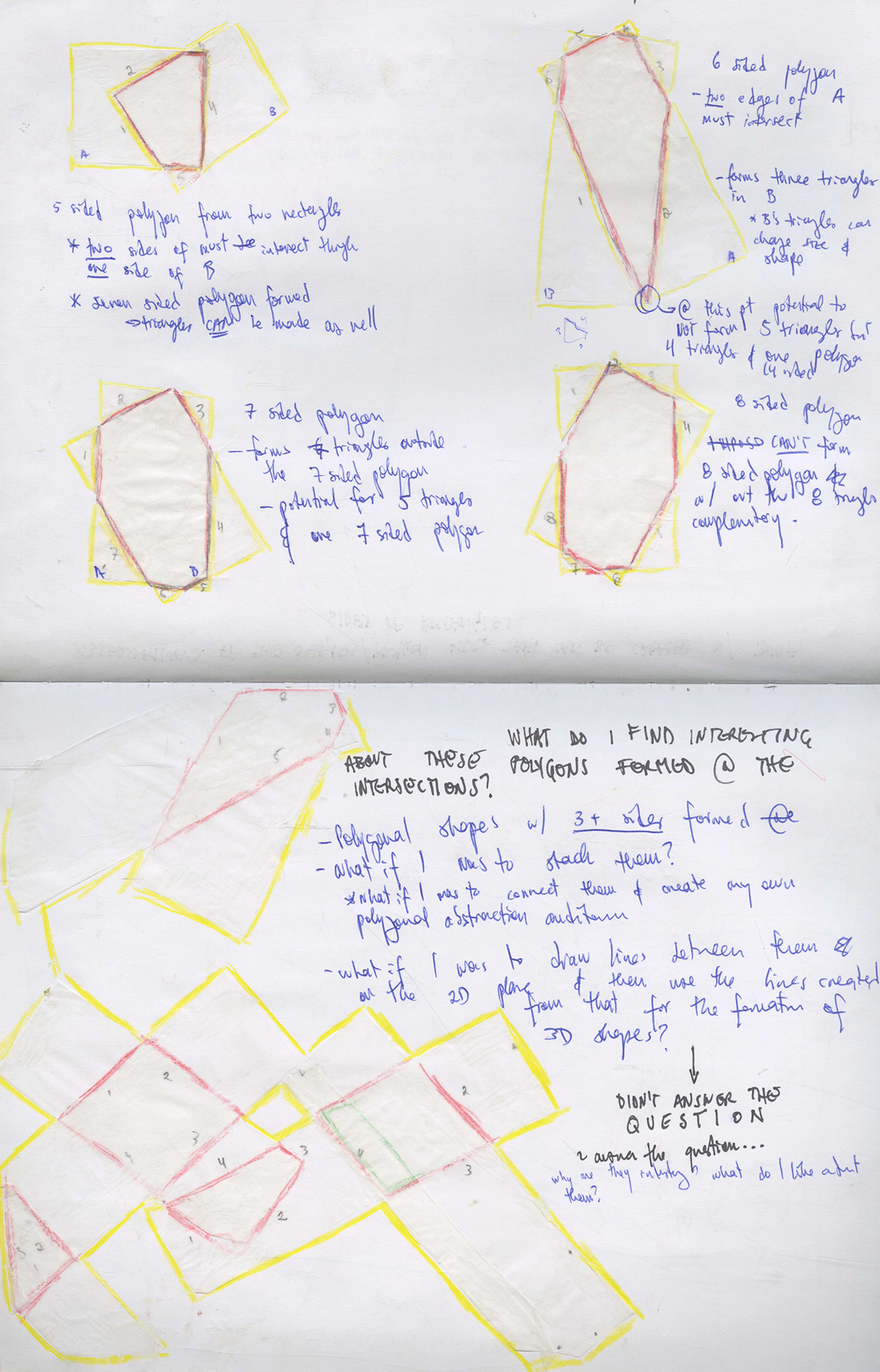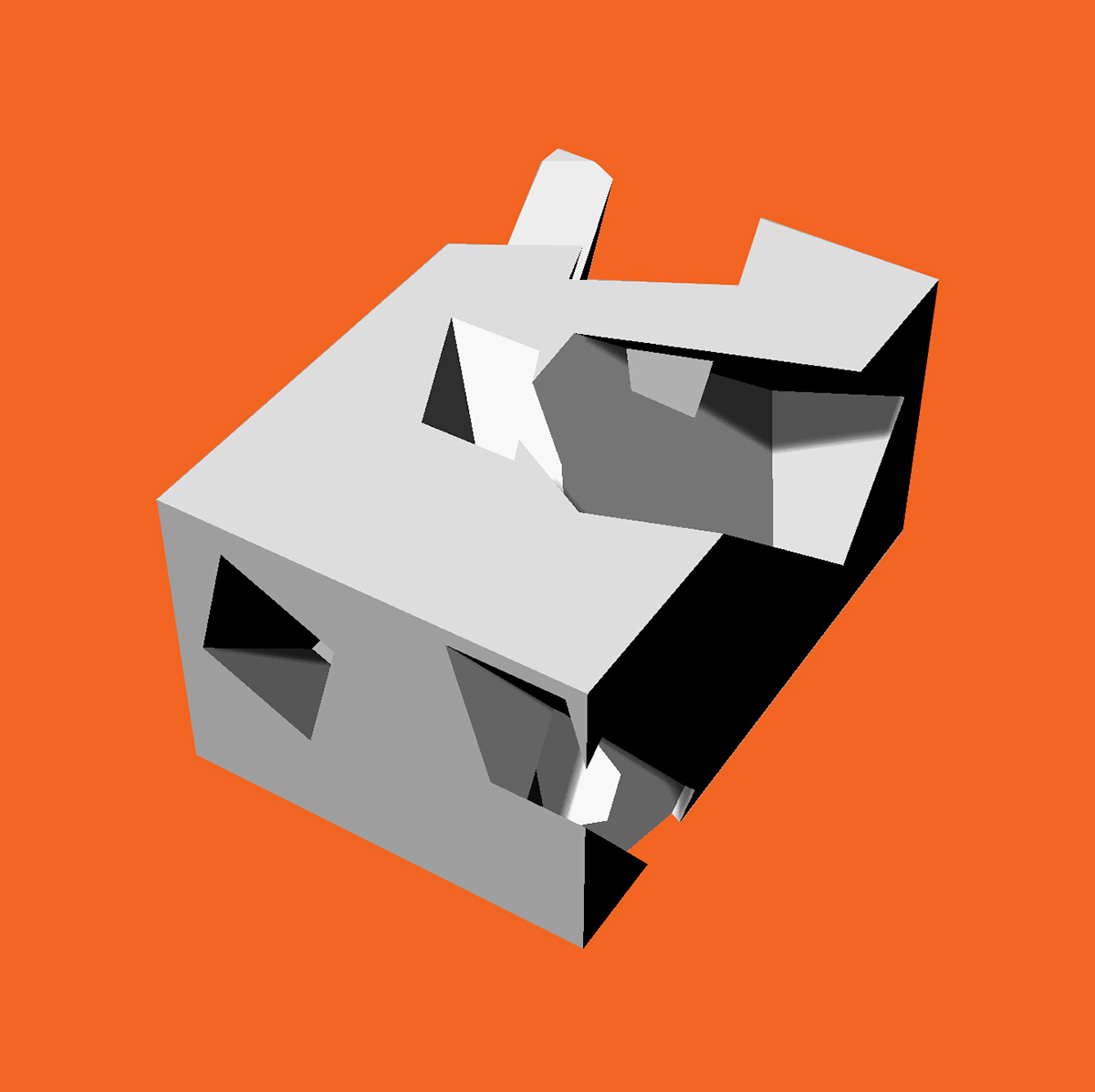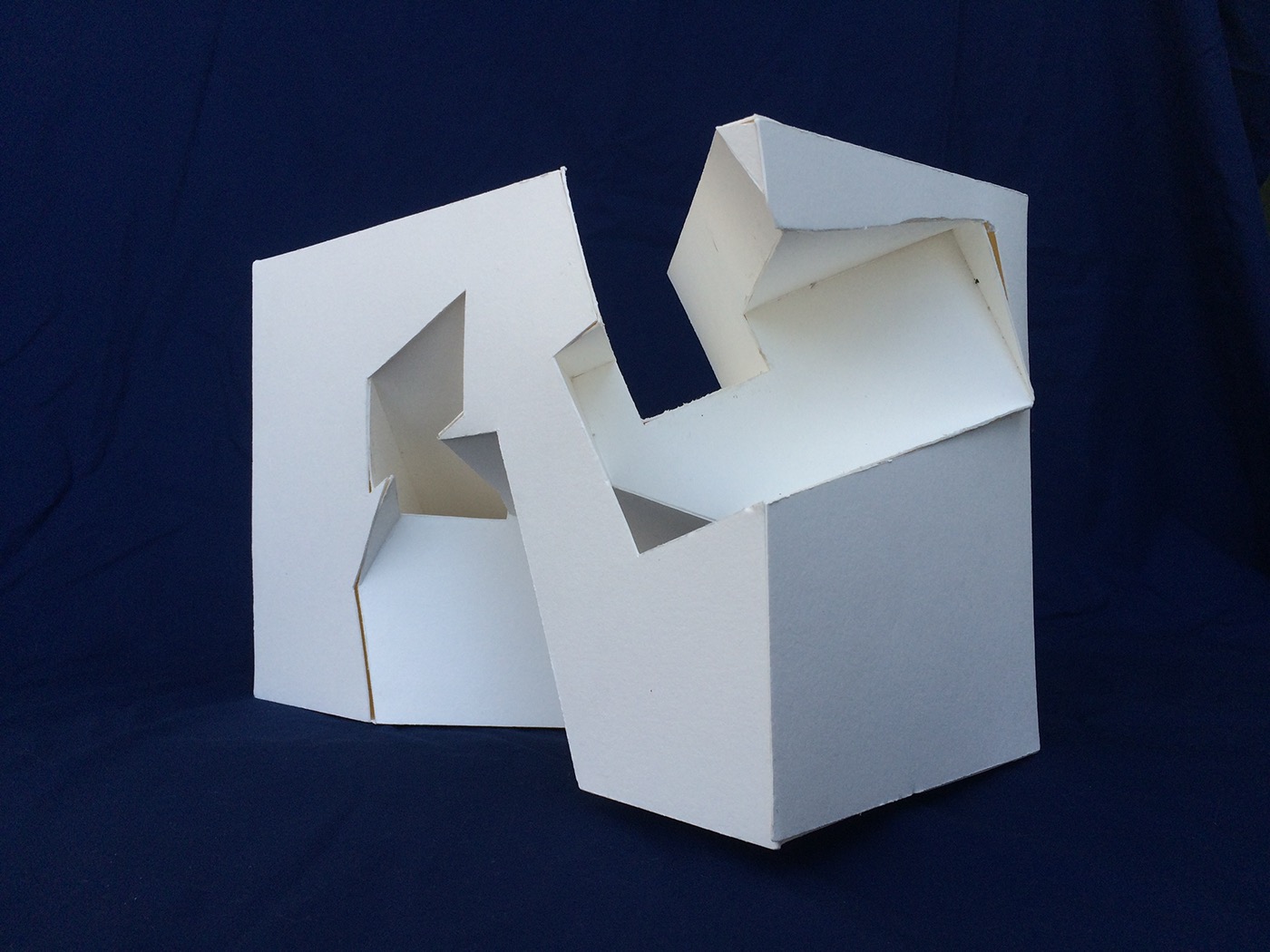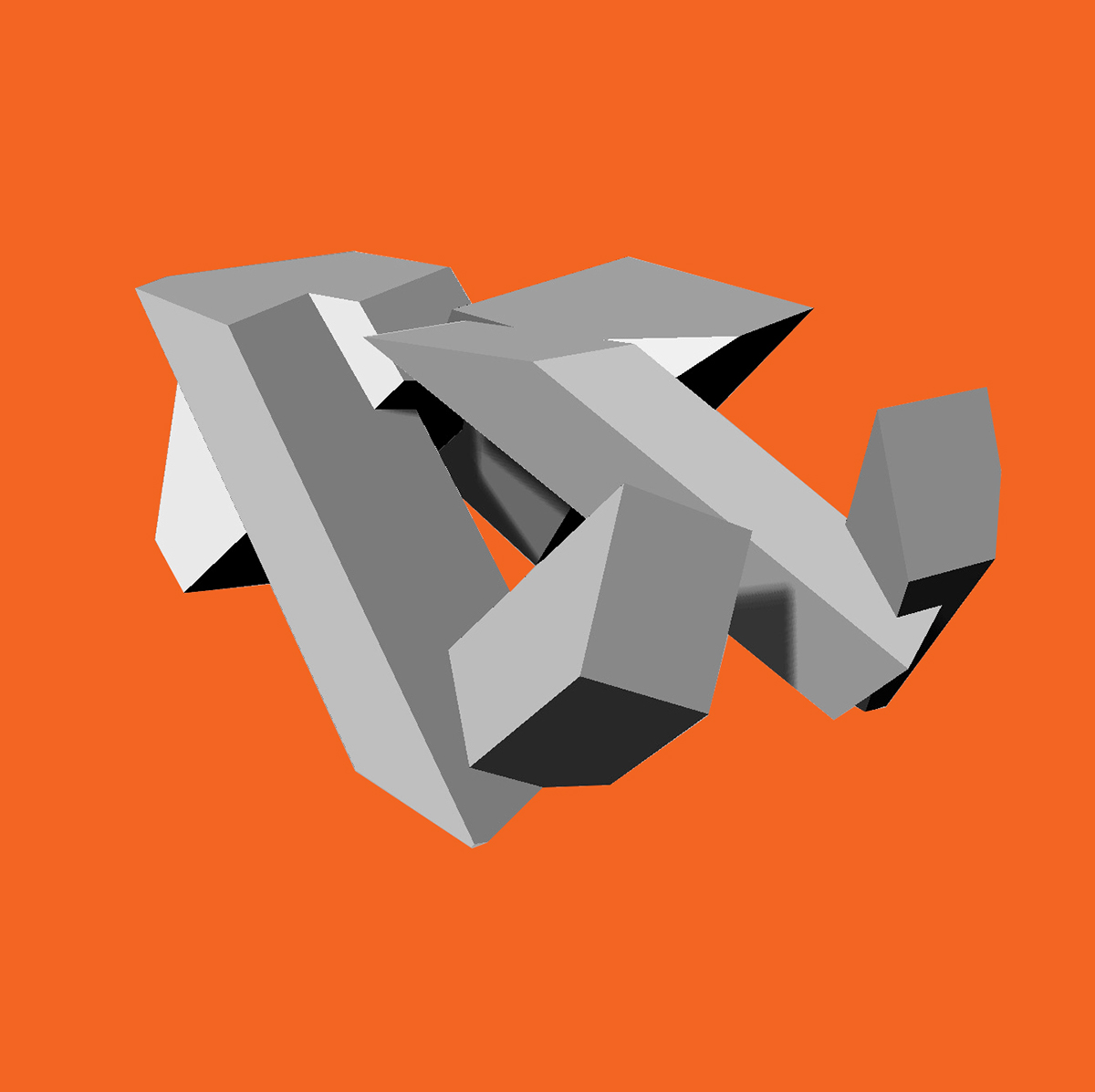To understand the relationship between solid and void spaces, I explored different polygons formed by intersecting two rectangular prisms.
My process to explore relationships between solid and void structures includes:
drawing: rough & refined sketches (trace, Bristol). Allowed me to understand the relationship between rectangles and formation of polygons.
Rhino modeling: subtraction of intersecting rectangles (explored in drawings) within a rectangular prism to create void spaces. Two models were produced: solid and void.
3D modeling: Allowed me to understand solid and void structure's physicality with 2-ply museum board.

Process: sketchbook exploration of polygon formation by intersecting rectangles.

Process: refined drawing of polygons formed when rectangles intersect.
Determining the polygons formed in 2D was more intuitive than in 3D. From my Rhino renderings, I discovered that intersecting rectangles formed a variety of non-symmetrical spaces within the solid unlike the predictable, symmetrical shapes in my sketches.

Rhino rendering of solid structure.

Orthographic drawings of my experiment's faces.

Plan oblique.

Model of solid.
I then explored the void spaces formed by the polygonal extrusions within the solid. I found the void spaces to be far more complex than my 2D explorations. Some extrusions were non-symmetrical, incongruent and even created concavities.

Void space Rhino rendering.

Model of solid's void space.

